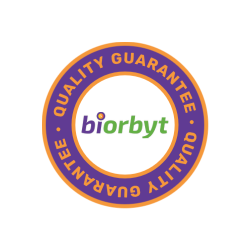You have no items in your shopping cart.
Cart summary

Human Syndecan-4 (rHuSDC-4)
Catalog Number: orb1495076
| Catalog Number | orb1495076 |
|---|---|
| Category | Proteins |
| Description | Syndecan-4 also known as amphiglycan or ryudocan, is a member of the syndecan family of Type 1 transmembrane proteins capable of carrying heparan sulfate (HS) and chondroitin sulfate glycosaminoglycans. The four vertebrate syndecans have two conserved cytoplasmic domains and divergent extracellular portions, except for HS attachment sites. Syndecan4 is the most similar to Syndecan2, but is more universally expressed and is found in virtually every cell type. Expression can be upregulated by TGFβ2 and in response to mechanical stress in smooth muscle, wound healing, arterial injury or acute myocardial infarction, probably in response to at least one inflammatory mediator. Human Syndecan4 ECD shares approximately 79%, 78% and 81% aa identity with mouse, rat and porcine Syndecan4 ECD, respectively. Addition of 20 80 disaccharides per side chain adds considerably to the size of the 20 kDa core protein. Noncovalent homodimerization of Syndecan4 is dependent on the transmembrane domain. The HS chains can bind fibronectin, SDF1, antithrombin, FGF2, midkine and tissue factor pathway inhibitor and can present FGF2 to its receptors. Proteolytic cleavage by plasmin, thrombin or a metalloproteinase may create a functional ectodomain. Genetic disruption of the Syndecan4 gene causes a mild phenotype, presumably due to compensation by other syndecans, but mice have an increase in placental thrombi as well as defects in wound healing and response to endotoxin shock. |
| Form/Appearance | Sterile Filtered White lyophilized (freeze-dried) powder. |
| MW | Approximately 15.4 kDa, a single non-glycosylated polypeptide chain containing 134amino acids with 6×His at C-terminus. |
| Protein Sequence | MASSIRETEV IDPQDLLEGR YFSGALPDDE DVVGPGQESD DFELSGSGDL DDLEDSMIGP EVVHPLVPLD NHIPERAGSG SQVPTEPKKL EKNEVIPKRI SPVEESEDVS NKVSMSSTVQ GSNIFERTEV LALEHHHHHH |
| Source | Escherichia coli. |
| Biological Activity | Measured by its binding ability in a functional ELISA. Immobilized rHuSyndecan4 at 500 ng/mL (100 μL/well) can bind rHuFGF basic with a linear range of 0.1-10ng/ml. |
| Endotoxins | Less than 1EU/mg of rHuSDC-4 as determined by LAL method. |
| Storage | This lyophilized preparation is stable at 2-8°C, but should be kept at -20°C for long term storage, preferably desiccated. Upon reconstitution, the preparation is stable for up to one week at 2-8°C. For maximal stability, apportion the reconstituted preparation into working aliquots and store at -20°C to -70°C. Avoid repeated freeze/thaw cycles. |
| Buffer/Preservatives | Lyophilized from a 0.2mm filtered concentrated solution in 20mM PB, pH 7.4. |
| Note | For research use only |
| Application notes | We recommend that this vial be briefly centrifuged prior to opening to bring the contents to the bottom. Reconstitute in sterile distilled water or aqueous buffer containing 0.1% BSA to a concentration of 0.1-1.0 mg/mL. Stock solutions should be apportioned into working aliquots and stored at < -20°C. Further dilutions should be made in appropriate buffered solutions. |
| Expiration Date | 6 months from date of receipt. |
Submit a review
Filter by Rating
- 5 stars
- 4 stars
- 3 stars
- 2 stars
- 1 stars
